We are MEOW MEOW TWEET, a small batch, vegan apothecary, born in Brooklyn and now creating out of the Hudson Valley.
Don't wanna be here? Send us removal request.
Text
5 Quintessential Autumn Foods for Your Skin and Scalp
Rosemary
Not just your potato's best friend, this fresh and woody herb promotes hair growth and stimulates blood circulation. The fragrant oils in the rosemary leaf also dissolve excess and clogging sebum in hair follicles to balance oil production without over-drying. Make your own herbal tea hair rinse with fresh rosemary or apply hair oil with the essential oil.
Find in our Rosemary Avocado Shampoo Bar and Juniper Mint Body Oil
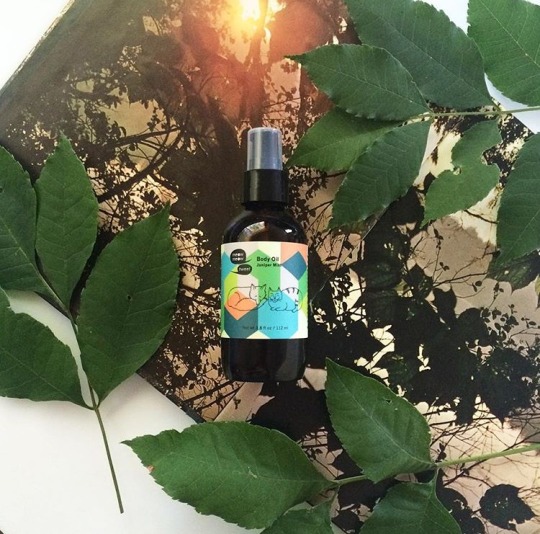
Pumpkin
Packed with vitamins and minerals that promote healthy glowing skin and hair- eating pumpkin will help from the inside out. And while you're making your Fall soup or pumpkin muffins, hold onto a couple spoonfuls of the puree as a facial mask. The flesh has fruit enzymes and alpha hydroxy acids that dissolve dry skin. It’s also gentle enough for sensitive and acne prone skin.
Find in our Face Mask
Rose Hips
Fall’s most delicious and underappreciated fruit, this small red bead appears after the rose's bloom dies away. The fruit's flesh is packed with Vitamin C; when eaten it has the benefit of fighting off free radical damage to strengthen your immune system and prevent signs of aging skin. Inside the fruit are antioxidant and omega-rich seeds, that yield a beautiful and penetrating oil that is a hero for sun-damaged and mature skin.
Find in our Face + Body Cream and Sugar Scrub
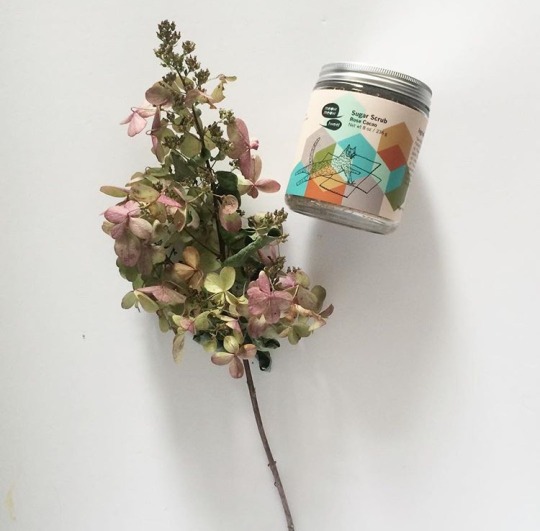
Apples
No longer a DIY'ers best kept beauty secret, raw apple cider vinegar is the perfect tonic for skin and scalp when consumed and used topically. Internally, the vinegar neutralizes your body chemistry and it has the same effect when applied to skin. It will balance oil production and clear and tone pores. The presence of malic acid makes it is a potent antibacterial and antiviral- use it neat on blemishes or as a dandruff treatment. Give your face a gentle exfoliation with the naturally occurring alpha hydroxy acids by mixing a spoonful with your favorite face mask.
Find in our Face Toner
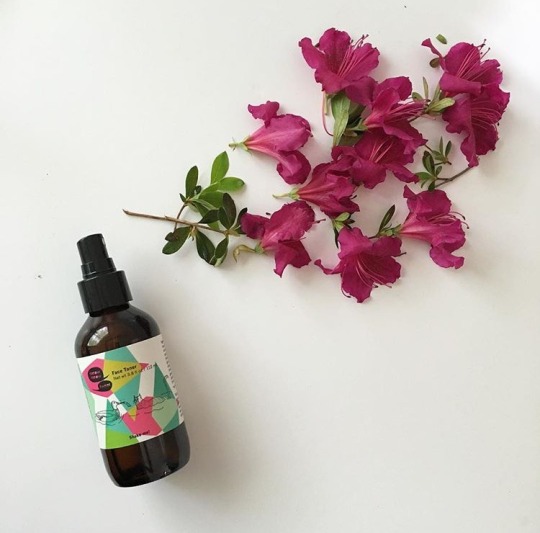
Carrot
Kids everywhere are eating carrots for eyesight, but the same nutrients in this bright root will yield beautiful skin and hair too. Carrots are chock full of beta-carotene that is converted to Vitamin A in the body, which strengthens and thickens hair. It is also rich in Vitamin C, essential for collagen production that is your skin's structural support and improves elasticity as it matures. A carrot a day is a delicious way to take advantage of this vibrant vegetable.
Find in our Face Oil
References
https://www.ncbi.nlm.nih.gov/pubmed/22517595
http://www.vitamincfoundation.org/collagen.html
#vegan#natural#autumn#fall#rosemary#pumpkin#rosehips#apple#carrot#meowmeowtweet#veganbeauty#plantsforpresident#food#autumnfood#herbaltea#diy#skincare
3 notes
·
View notes
Text
My Sister the Nutritionist: Soy, You Like Soy?
Soy is one of the most controversial foods in the world. Depending who you ask, some may call it a superfood while others consider it a toxin. It seems for every study supporting the benefits of soy there’s another revealing its harmful effects− making researching soy very confusing to consumers.
As a non-meat eater, soy products tend to find their way into my diet quite often, which led me to wonder how much soy should I be eating?
In the U.S. soy is found practically everywhere. Whether it’s in processed foods, in soy products like milk, tofu, or sauce or as whole beans like tempeh, edamame, or soy nuts; it is nearly impossible to avoid. Overall, it is a great source of plant protein, healthy fats, and high in vitamins and minerals. Soybeans are also rich in other bioactive plant compounds that can have positive effects on our health.

From the studies on soy we find that we really don’t know all the effects it has on our health yet. Though, the majority of reliable research shows that when eaten in moderation (about two servings per day) there are no negative effects on our health.
Articles against soy claim it negatively affects the functioning of the thyroid and other hormones, is cancer causing, or can lead to a nutrient deficiency. However, most results on the negative health effects of soy are not very valid. In these studies other variables are not controlled for like the chemicals used during growing or processing, some use specific components of soy or unrealistic serving sizes, and others use populations with specific health conditions as their subjects.
So, what we do know is soybeans or products CAN be safe. They are safe when included in a healthy, well-balanced, varied diet. And like all foods−should be eaten in moderation. When choosing what products to eat, it is important to go with the least processed option whenever possible with limited additives and limited unknown ingredients. And organic, always organic!
Reference: Norris, Jack RD. (2013-2016). Soy Articles. Retrieved from: http://www.veganhealth.org/articles/soy
Written by Amber Pelletier. Amber is a nutritionist and the sister of Tara (one of our co-founders). She will be guest blogging for MMT sharing some of her knowledge on essential vitamins and minerals and how we can access them in our skin care and diet.
Photo credit: World Food Processing
0 notes
Text
Let’s Stick Together
The launch of our new stick has yielded a bunch of incredible feedback. Please keep it coming! We thought we’d take a moment to answer two of our most commonly asked questions and let you know a little about our process of development.
Do you plan to make a grapefruit version of your new sticks?
AND
When will we see a baking soda free version of the stick?
The Lavender Bergamot and the Lemon Eucalyptus are the only versions of the stick that we plan to make in the near future. Besides taking f-o-r-e-v-e-r to develop these and wanting to enjoy our honeymoon with them– we’re also such a small team that it takes a lot of work to launch new products, holy smokes!

Here are some technical reasons why…
When we formulated the deo sticks, we had a few key things in mind (besides using awesome, safe, organic, recognizable ingredients and a biodegradable stick). The stick has to be effective, gentle and non-greasy. Seems like we should easily be able to translate the cream recipes, right? Well, it’s more complicated than just adding some wax and putting it in a tube. We made over 30 versions of the stick before we landed on this final version.
We were unable to make a successful deodorant that met those standards and with the same scent as the Grapefruit Baking Soda deodorant. The essential oils in the deodorants are just as hardworking as the other ingredients- they’re not just a pretty scent! To create a Grapefruit version, we would have to increase the amount of those citrus essential oils to an unsafe dilution for them to be as effective as they are in the cream. Or we would have to increase the amount of baking soda, which would lead to irritation. Or we would have to increase the amount of powder, which would lead to a gunky mess.
This has a lot to do with the method of application. Even though the stick version is a more favorable application method, it’s not as thorough as the cream. Applying with your fingers means that you can apply more and rub it all the way in- so it won’t stain clothes or cause abrasion (which leads to irritation). The sticks have to be able to work with less product applied since people won’t be rubbing it in with their fingers.
Essential oils all function very differently and all have different levels of effectiveness. In the end, we chose some stronger more antimicrobial oils that we could use at a lower dilution.
Because less is applied, the addition of that teeny amount of baking soda gives a little added “oomph” to the recipe- making it more effective. We did our due diligence on this. Last summer, we had some of our most loyal and “sensitive” customers, store owners and family (who use our BS-free deo) test out the sticks until we landed on something that works and had the least amount of baking soda while still giving fresh results.
We hope you’ll give them a try! Shop it here.
7 notes
·
View notes
Text
Cat Out of the Bag: Our New Deodorant Stick
What was that? MMT has a new stick deodorant?
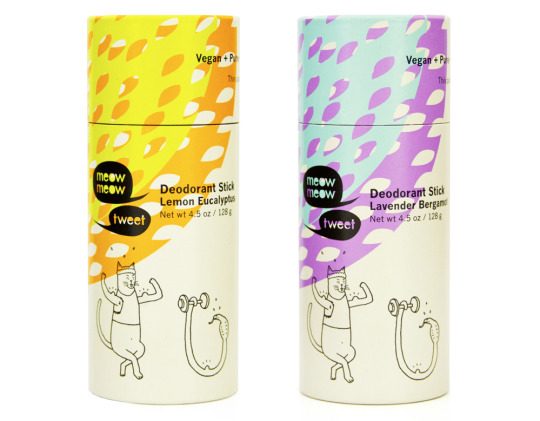
Now, what you’ve all been waiting for– we made a Stick Deodorant! Applying deodorant with your fingers is a super thorough method of application, but we understand that it’s not always a good time for an impromptu pit massage. We’ve been working for two years to figure out how to bring it to you in stick form. The challenge? We wanted to avoid a plastic tube and we wanted to bring you something gentle that works.
Enter, the biodegradable push tube. Yes, you heard correctly. The packaging is indeed biodegradable–it will compost in a year! It can also be recycled with your cardboard. Hello, reduced carbon footprint!
We also learned a lot from our Baking Soda Free Cream formula and from your feedback! We know that you need something that won’t irritate your underarms and works for the whole day. So, even though we did put a touch of baking soda in this recipe, magnesium is still the queen here, so this stick has a similar formulation to our soda-free cream. Before we launched, we had our most sensitive-pitted friends, family and loyal customers give it a test drive. They used it throughout the summer of 2015, provided feedback and we tweaked the recipe until it was “just right.”
So, without further ado...
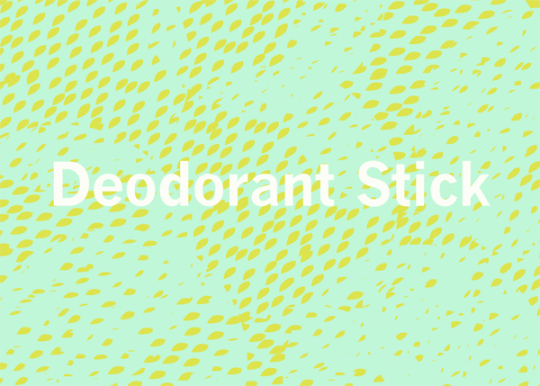
We bring you a synergy of potent plant and mineral powders with sweet smelling and mighty essential oils that will keep you smelling oh-so fresh. Available in two unique scents, the Lavender Bergamot smells sweet and floral with a squeeze of zesty citrus. The Lemon Eucalyptus smells fresh and clean with a spicy hint of clove.
Skin conditioning, organic plant oils and butters moisturize and soothe even the most sensitive skin. Not only does it work, but all of the ingredients are from pure plant and mineral sources–and it’s aluminum free. Now isn’t that a laundry list of radness?
Are you ready? Try it here!
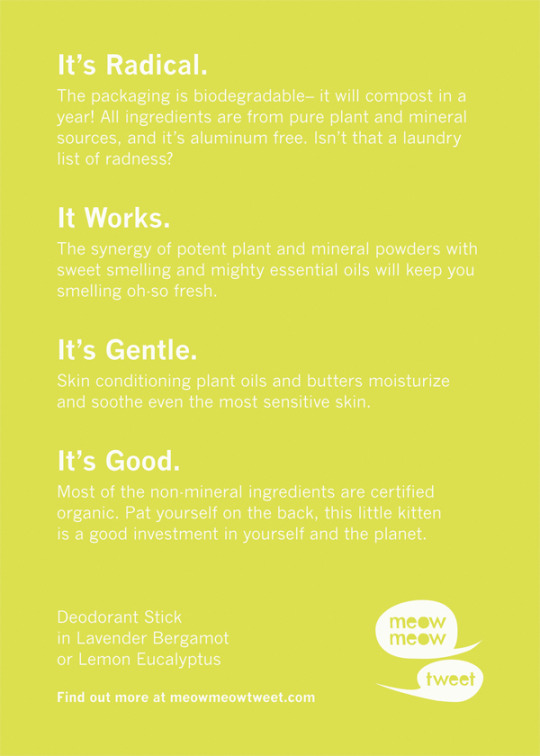
vimeo
#stick deodorant#vegan#natural#natural deodorant#lemon eucalyptus#lavender#meow meow tweet#biodegradable#recycle#carbon footprint
1 note
·
View note
Text
DIY Soapless Bath Time for Babes
Sometimes even the most gentle natural soap is too much for sensitive skin. Here’s our recipe for a super gentle bathtime soak that will cleanse and soothe. This can also be used for chicken pox, poison ivy and other dermatitis.
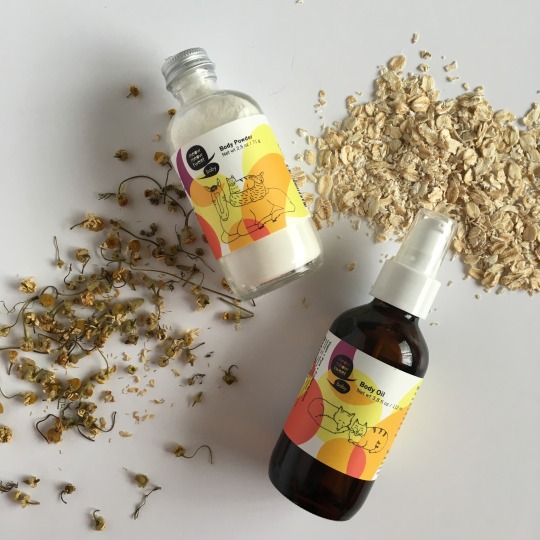
1 Tablespoon of our Baby Body Powder
3 Pumps of our Baby Body Oil
1 Tablespoon of Ground Oats
1 Tablespoon of Chamomile Tea or 1 tea bag is perfect!
Add all to a lukewarm bath and soak your babe or your bum. If you don’t want to deal with the pieces of oats and tea, put them in an old sock and tie off the end to create a quick, reusable bath tea bag! This can also be used over the body as a cleansing washcloth.
3 notes
·
View notes
Text
Plant Power: Essential Oil Safety Primer
Essential oils are volatile molecules found in the cells of aromatic plants. They are the lifeblood of plants. We extract them by steam distillation and physical expression of raw plant matter. Essential oils have been used for centuries to address and support physical, emotional and spiritual issues.
The growing popularity and availability of essential oils puts us in contact with them more and more in our products. Essential oils are natural, so why would there be safety considerations? They exist in plants for two reasons: protection and communication. (1) They attract pollinators and insects that are beneficial to the plant, they protect from predators and illness, and they deter herbivores from munching (ever wonder why your garden herbs are deer resistant?). It makes sense that the essential oils can function in similar ways when used by humans. The right amount of them can balance congested skin, soothe a headache, stimulate uterine contractions or ease anxiety. The wrong amount can cause skin irritation and other adverse or unwelcome side effects. THEY ARE POWERFUL and should not be underestimated!
Pretty often we’re asked about the safety of essential oils in our products and so we’ve put together a quick and easy primer to answer your most frequently asked questions. We will be updating this post, so check back!
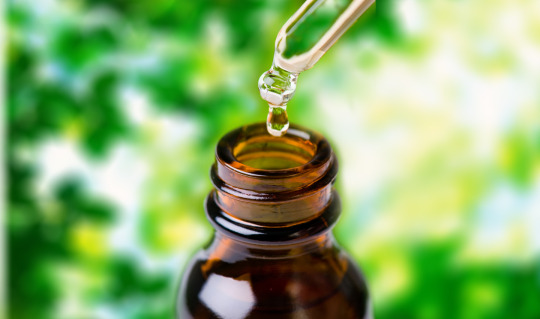
Photo credit: gentlebalancemassage.com
Pregnancy
The use of essential oils during pregnancy and nursing is a confusing topic- and a simple google search yields a ton of contradictory information. Here are 3 rules of thumb for pregnancy:
1. Be sure to always consult with your health practitioner about essential oil use during your first trimester. Every body and circumstance is different! It’s better to err on the side of caution and safety.
2. Never rub essential oils directly onto a pregnant belly.
3. It is also recommended to avoid neat or internal application of essential oils..
If you have specific questions regarding essential oils and use, please get in contact!
Safe: Cardamon, German and Roman Chamomile, Frankincense (species carterii), Geranium, Ginger, Neroli, Patchouli, Petitgrain, Rosewood, Rose, Sandalwood, and other nontoxic essential oils (includes Lavender (species angustifolia), all Citruses, etc). Avoid: Clary Sage, Lemon Basil, Frankincense papyrifera (species carterii is okay), Lemon Balm, Lemon Leaf, Lemongrass (may irritate skin: use below 1%), May Chang, Melissa, Myrtle, Nasturtium, Lemon Tea Tree, Lemon Thyme, Lemon Verbena
MMT + Pregnancy If you’re super sensitive to scent (that pregnant nose!)- we have a few unscented items like our Face + Body Cream, Cocoa Skin Cream and most of our Baby line. The only products that we don’t indicate while pregnant are the Black Walnut Sage Soap (clary sage!) and please do a patch test with our Lavender Lemongrass Body Oil before using to make sure you don’t experience irritation.
Children 6 years or under Young children can use many essential oils but the safest are Lavender, Sweet Orange and Roman and German Chamomile. Please note that dilution should be below .5%. The list to avoid is long, but many of these are rarely used in skin care. I’ve highlighted the most common that are worth noting. Avoid: Ajowan, Basil, Birch (sweet & tar), Buchu, Cajuput, Calamint, Cassia, Cinnamon, Clove, Cornmint, Eucalyptus (species radiata is okay), Feverfew, Garlic, Genipi, Ho Leaf (ct. Camphor), Hyssop (ct. Pinocamphone), Lanyana, Spanish Lavender (Lavandula stoechs), Leek, Mugwort, Niaouli (ct. Cineole), Nutmeg, Onion, Oregano, Parsley, Pennyroyal, Peppermint, Perilla, Pimento, Rosemary, Sage, Savory, Spike Lavender (Lavandula latifolia), Tansy, Tea Tree, Tejpat, Thuja, Thyme, Western Red Cedar, Wintergreen, Wormwood
MMT + Children Our Baby Line is perfect for children of any age. The Lavender Lemon and Rose Pink Clay soaps are great too. For adolescents and teens, the deodorants and facial care products are absolutely fine and great for getting your kid started on the natural route!
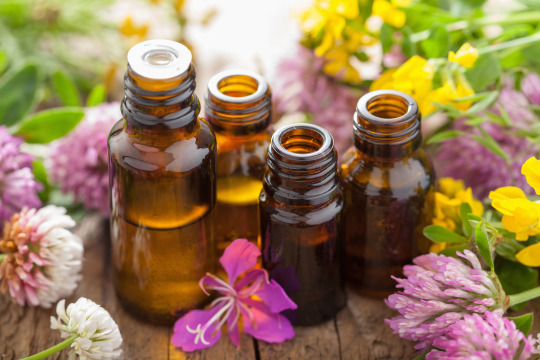
Photo credit: oilpoweredmom.com
Cats Cats are missing a liver enzyme that most mammals have that allows them to metabolize many constituents in essential oils. It’s generally regarded as UNSAFE to use essential oils topically on cats, and they should never be administered internally. The use of some hydrosols is okay topically. When diffusing, maintain good ventilation and circulation of fresh air. Make sure your cat can leave the area and only diffuse for 15 minutes at a time. (2) Avoid: all Citruses, Basil, Birch, Clove, Hyssop, Oregano, Pennyroyal, Savory, Tansy, Tarragon, Tea Tree, Thuja and Wintergreen
Dogs Some essential oils can be used safely with great results at a LOW dilution with dogs. The guidelines for children under 6 are the ones to follow. Once again, hydrosols can be just as effective and are much less risky. (3) We love lavender hydrosol for repelling bugs on our family dog!
MMT + Dogs Our Beer Shampoo Bar and Insect Repellent are safe for dogs.
Birds + Other Small Animals No, just don’t. Please make sure not to diffuse essential oils around these small and sensitive animals either!
Photosensitivity Some essential oils can cause the skin to burn easily when exposed to UV rays- meaning you can’t go out in the sun for 12 to 14 hours after applying these oils. Most of these are citrus essential oils, but not all citrus essential oils are phototoxic- and when used in low dilutions there is minimal risk of sensitization. Proper dilution is between 0.5% and 1%. Phototoxic: Bergamot, Grapefruit, Lemon (expressed), Lime (expressed), Mandarin Leaf, Bitter Orange, Rue, Angelica Root, Cumin NON-phototoxic Citrus: Bergamot FCF, Lemon (distilled), Lemon Leaf, Lime (distilled), Mandarin, Sweet Orange, Satsuma (expressed), Tangelo, Tangerine, Yuzu
MMT + Photosensitivity We only use Bergamot FCF in our products, so when you see it listed, rest assured! Our Grapefruit Deodorant and Tangerine Lime Lip Balm both contain photosensitive oils in quantities below .5% as indicated. Please patch test both to make sure you are not sensitive.
Footnotes 1. http://roberttisserand.com/essential-oils/, Robert Tisserand, Date Unknown 2. Vicki Rae Thorne & Robert Tisserand, “Is Essential Oil Safe for Your Cat?”, Animal Wellness Magazine, July 2011 3. Nayana Morag, “The Aromatic Dog”, Off The Leash Press, LLC, June 2015
Resource & Bibliography Essential Oil Safety, Robert Tisserand The Aromatic Dog, Nayana Morag Advanced Aromatherapy, Kurt Schnaubelt National Association for Holistic Aromatherapy Website Aromatherapy Level One Certification, NYIA
2 notes
·
View notes
Text
My Sister the Nutritionist: Eczema, Psoriasis & an Inflammatory Diet
Tired of having red, itchy or inflamed skin? For many chronic skin conditions like psoriasis, eczema, or other dermatitis it is not only important to eliminate external irritants, but to also search for the root of the issue in order to prevent rather than simply treat signs and symptoms. We typically medicate these conditions topically with corticosteroids, calcineurin inhibitors, or chemical packed moisturizers. These treatment options work by suppressing our inflammatory response to reduce inflammation.
Inflammation is not always a bad thing, think of it as a signal from our skin. It is a mechanism by which our body fights off threatening invaders in order to protect our health. These invaders include substances such as allergens, harsh chemicals, germs, bacteria or other things that tend to damage our skin or cause us to come down with nasty colds. So by suppressing our inflammatory response with drugs our skin might appear clearer and less bothered. However, the treatment suppresses our immune system, which can leave us vulnerable to disease or infection.
This defensive mechanism is extremely important to protecting our health, but inflammation can also be harmful when it persists over long periods of time. When our body is in an inflamed state for a long time it's called chronic inflammation. Chronic inflammation happens when the balance between anti-inflammatory compounds and pro-inflammatory compounds in the body is compromised. The cause of this imbalance is unknown, but the health of our gut seems to play a critical role in the presence of chronic inflammation.
Why is the health of your gut so important? Well, most of our anti-inflammatory and pro-inflammatory compounds reside inside your gastrointestinal (GI) tract. Damage to our GI tract or gut means damage to these compounds, resulting in the internal imbalance and prolonged inflammation.
While it is important to avoid contact with external triggers, research has shown that what foods we choose to put−or not to put−INTO our bodies have a stronger influence on the presence of chronic inflammation and the overall health and functioning of our immune system.
In fact, some foods we eat are known to promote inflammation, while others can combat it! Known as the anti-inflammatory diet, research suggests that including a diet rich in anti-inflammatory foods and low in inflammatory-promoting foods can reduce chronic inflammation and the many chronic diseases related to it.
Foods that promote inflammation are foods that tend to be labeled “bad” for our health already. These include, refined carbohydrates or sugars, trans fats found in fried foods, soda, red meat, high fat dairy products and margarine. Foods that combat inflammation include a variety of fruits and veggies high in antioxidants and polyphenols such as dark leafy green vegetables, tomatoes, peppers, onions, berries, and cherries. Lean proteins containing anti-inflammatory properties like tofu, tempeh, soynuts, soymilk, or edamame. Along with flax seeds, chia seeds, walnuts, hemp seeds, or oils high in omega-3 fatty acids− known for its role in reducing inflammation.

Therefore, to treat your skin externally−first eliminate products with harsh chemicals that tend to further dry out your skin and suppress your skin’s natural response- and switch to a moisturizer with natural ingredients. Try my favorite MMT Cocoa Skin Cream, made with only four organic ingredients! Or one of the other unscented MMT products like the new MMT Face + Body Cream or Baby Body Oil. And use food as your medicine! Opt for whole grains over processed, healthy fats over trans fats, naturally sweetened beverages over ones loaded with sugar, and lean plant proteins over high fat dairy and animal products!
1. Moore, Marissa (2014). Inflammation and Diet. Academy of Nutriton and Dietetics. Retrieved from:http://www.eatright.org/resource/health/wellness/preventing-illness/inflammation-and-diet
2. Nutrients found in plant products that are protective against degenerative diseases.
Written by Amber Pelletier. Amber is a nutritionist and the sister of Tara (one of our co-founders). She will be guest blogging for MMT sharing some of her knowledge on essential vitamins and minerals and how we can access them in our skin care and diet.
Photo credit: The Surge
3 notes
·
View notes
Text
Focus on Shea Butter
This winter, Shea Butter has quickly become our best friend. But, seriously. Between the blasting heat indoors, and the biting cold outside, our skin has been left reeling and in need of some serious hydration. So it should come as no surprise that the ultra-nourishing, soothing powers of Shea Butter have been a savior for our skin, rejuvenating and healing the damages left by this never-ending winter.
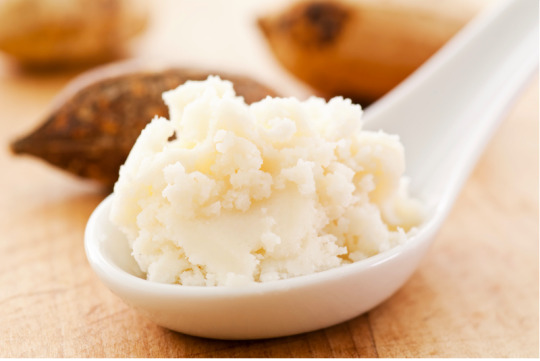
But, let’s back up our love letter to this all natural ingredient for a sec…what exactly is Shea Butter? We use Fair Trade West African Unrefined Shea butter, which is a natural fat taken from the Shea nut. Unrefined Shea Butter is extracted and prepared without the use of chemicals or preservatives, and retains it's nutty, slightly smoky scent. With Vitamins A, E and F, this nourishing ingredient provides the skin with a laundry list of benefits. While Vitamins A and E work to maintain the skin, keeping it clear, healthy and soft, Vitamin F acts as a skin protector and rejuvenator. So, basically, this dreamy ingredient works to soothe rough, dry and chapped skin, easily absorbing into your epidermis so you won’t get that same “greasy” feeling that so many other moisturizers leave behind.
With all those benefits, it should come as no surprise that Shea butter plays a starring role in so many of our products, from our Bar Soaps to our Repair Balm, and even our NEW Face + Body Cream. The ingredient adds a hydrating punch without clogging up pores, making it a must have for any beauty routine.
Photo credit: OturaKa Inc
Written by Morgan Hart, a natural skincare addict, who frequently shares her thoughts on green beauty on her blog Blushing Wit.
2 notes
·
View notes
Text
Cat Out of the Bag: Our New Face + Body Cream
Isn’t it time we made healing and hydrating our skin easy… and dreamy? Our new Face + Body Cream is exactly that. This head to toe wonder cream is an ideal daily moisturizer for all skin types-- including those with eczema or psoriasis, mamas, babies, and everyone in between.
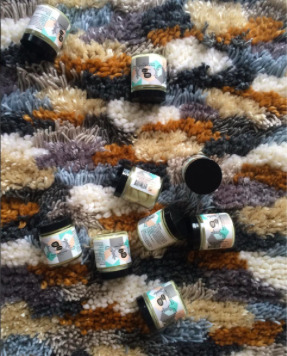
The cream is packed with gorgeous organic butters and all-star organic plant oils like tamanu, rosehip and pumpkin seed. It refreshes dry, itchy skin while reducing scars and fine lines. Formulated for delicate facial skin and the whole body, our Face + Body Cream will penetrate quickly without clogging pores. Though it’s not scented with essential oils, the cream smells sweetly of the unrefined organic oils it's made with. It’s deeply nourishing for skin and a multi-tasker at its finest. The cream can be used as a gentle makeup remover – it is especially great for stubborn eye makeup, and for growing bellies, sore nipples and even your little ones!
Want to get in depth about our amazing ingredients?
Organic Sunflower Seed Oil
Expressed from the kernel of the sunflower plant, sunflower seed oil is easily absorbed with a light texture. With a high amount of vitamin E, sunflower oil helps in the prevention of damage to sensitive skin cells by ultraviolet light, or UVA, from the sun. Additionally, studies have shown that vitamin E may prevent scarring, smooth the appearance of existing wrinkles and generally improve the appearance and health of your skin.
Organic Shea Butter
Our Unrefined, Fair Trade West African shea butter is a natural fat taken from the shea nut; with Vitamins A, E and F. Vitamins A and E are particularly helpful for sun damaged skin and to prevent premature wrinkles and facial lines. Vitamin F acts as a skin protector and rejuvenator. Shea butter easily penetrates the skin and it’s noncomedogenic (won’t clog pores). Stay tuned for a blog post about this gorgeous butter coming soon!
Unrefined, Organic Mango Butter
Similar in benefits to shea butter, mango butter is a powerful skin food, however the fatty acid profile varies slightly with an enhanced level of anti-oxidants and vitamins A, C, and E. Mango butter can act as an effective protectant for skin and hair, shielding against harmful UV rays and potential sun damage.
Organic Pumpkin Seed Oil
Cold pressed and unrefined, pumpkin seed oil is a delicious culinary oil and skin food! Rich essential fatty acids, it’s a champ at regulating proper skin sebum (oil) production, making it superb for both oily/acne-prone skin and dry skin. The seeds are rich in zinc, which is a great antioxidant and skin healer. Talk about a wonder-oil!
Organic Rosehip Fruit Oil
Pressed from the fruit of the wild rose bush, rosehip oil is a fast penetrating, non greasy oil for dry, weathered and dehydrated skin. High in lineolic acid, Vitamin C and A, it’s great for congested and aging skin. Read more about the importance of fatty acids here.
Organic Tamanu Seed Oil
Cold pressed and unrefined from large nuts of the Ati tree, this deep green oil is an especially potent skin rejuventor, renowned for reducing scars and fine lines and healing damaged skin. It contains calophyllic acid, a unique fatty acid, which research shows will exert potent antibacterial and anti-inflammatory actions, and can inhibit the bacteria that contributes to acne.
Can’t wait to try it? Find it here.
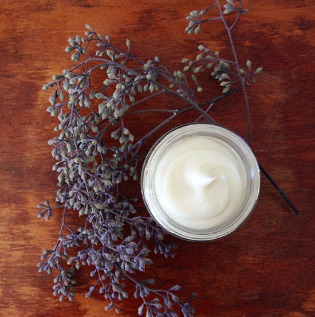
2 notes
·
View notes
Text
One Product, One Million Uses: MMT’s Face Mask
Everybody’s skin is unique in its own way. While one complexion might crave an extra dose of moisture, another might require a more lightweight solution to deal with oil. Skincare doesn’t have a one-size-fits-all solution, which is why everyone’s routine is so unique. All that being said, it’s our passion to create products that you can rework to fit your individual needs, a formula that can be used for any skin type without hesitation.
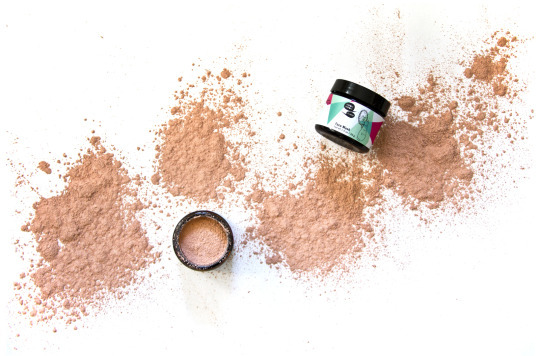
And, not to toot our own horn or anything, but we’d like to say that our Face Mask really fits the bill. We carefully selected each of the four powerhouse ingredients in our dry powder mask to be used for any skin type or concern. There’s organic pumpkin to gently exfoliate and regulate oil production, chickpea flour to shrink pores and draw out impurities, French pink clay to detoxify and increase healthy blood and lymph circulation, and even aloe vera powder to soothe and moisturize.
Alone, this nutrient rich, antioxidant mask is perfect for ALL skin types, but we’ve got a few tips to help tailor it to your specific needs even further. You see, one of the big benefits of a dry powder formula is you can mix it with a variety of different partners to activate, so you can switch it up a bit depending on how your complexion is feeling that day.
Here’s just a few suggestions for mixing up this magical formula:
Mix with Water: This is perhaps the most basic option, but it’s also one that no skin type can go wrong with. Water activates our formula into a spreadable paste which, after about ten or fifteen minutes, will partially dry down on your skin. With ingredients to detoxify, hydrate and soothe your mug, there’s really no problem that can’t be solved when you combine this powerful twosome.
Mix with Avocado: For dry skin in need of some serious hydration, adding some avocado to your face mask might just be the perfect answer. Simply mash up a bit of avocado and mix in a bit of the powder face mask and voila! The superfood pairs well with out superstar mask, creating a concoction that will moisturize, purify and strengthen your complexion.
Mix with Green Tea: Irritated skin in need of some soothing will greatly benefit from a combination of our face mask with some (cooled) green tea. Why green tea, you ask? Studies have found that green tea greatly reduces inflammation, while also rejuvenating your skin as a whole. Add that in with the powerful ingredients behind our face mask and you’ve got a match made in heaven.
Mix with Apple Cider Vinegar + Water: While our face mask alone will do plenty of work to detoxify and decongest oily, unsettled skin, adding in a bit of apple cider vinegar (diluted by water, of course) will really help to clarify your complexion. We’re obviously big fans of this incredible ingredient (which we use in both our Face Toner and Herbal Insect Repellant), but we have pretty good reason for it. Apple cider vinegar helps to balance out any skin type, though it’s especially useful for those with oily or combination skin. The best part? It’s an ingredient you can find right in your kitchen.
Written by Morgan Hart, a natural skincare addict, who frequently shares her thoughts on green beauty on her blog Blushing Wit.
3 notes
·
View notes
Text
Conscious Beauty with Justine Sweetman - Repair Balm
Justine Sweetman is a makeup artist based in New York, specializing in non-toxic and vegan beauty. She will be guest blogging with MMT to share some tips from behind the camera.

I don’t go anywhere without Repair Balm. It lives in my makeup kit as well as my personal stash. I love applying it on eyelids and cheekbones for a gorgeous dewy look that isn’t greasy. It’s also perfect for a subtle bit of sheen on top of lipstick.
Photo credit: A. Kaskfir
6 notes
·
View notes
Text
My Sister the Nutritionist: Vitamin E
Fat-soluble Vitamin E contains antioxidant properties, which provide countless benefits to both your health and your skin! Antioxidants work to combat free radicals (harmful substances) in your body. By blocking free radicals from your body, Vitamin E boosts immunity, reduces cholesterol, and reduces the risk of developing cancer.

Sunflower oil, high in Vitamin E, can be found in MMT body oils, soaps, and our face cleanser. It blocks free radicals from damaging the skin and can protect the skin from unavoidable environmental stress that cause skin cell irritations and mutations. It’s antioxidant properties also aid in the prevention of cell aging, promoting a healthy, youthful complexion while reducing wrinkles, scarring, or damaged tissue. The list of benefits doesn’t stop there! Vitamin E also contains anti-inflammatory properties that calm and hydrate the skin to soothe dryness and irritation.
Want these benefits? Begin increasing your skin and overall health by consuming adequate amount of Vitamin E daily! This vitamin is found in high amounts in nuts, seeds, and vegetable oils. So be sure your diet includes sunflower seeds, almonds, spinach, or avocados- to name just a few!
Written by Amber Pelletier. Amber is a nutritionist and the sister of Tara (one of our co-founders). She will be guest blogging for MMT sharing some of her knowledge on essential vitamins and minerals and how we can access them in our skin care and diet.
0 notes
Text
Natural Deodorant 101
Everyone’s body chemistry is different. Your personal body odor is determined by your diet, your hormones, your genetics, your lifestyle, your mood, your wardrobe… you get it. This is why, what works for one person in the deodorant department, may not work for another. And if you’re here… you’re looking for a natural deodorant OR you’ve found something (congratulations!).

So why do we smell? Basically your skin is covered with trillions of little microbes, known as your “skin flora”. These little guys are one of your skin’s first defenses against infection and can actually help your immune system. And, they don’t smell. Neither does your sweat! It’s the combination of the two that produce odor. The apocrine glands (located in your underarms and other tender parts of your body) produce sweat that contains fat and protein. The bacteria feed off of the proteins and fats and break them down. The byproduct (or bacteria poo) is the odor that you smell. The reason that only certain parts of your body stink is because the apocrine glands are only located in certain areas, otherwise your other sweat glands just produce salty water. Things like stress, ovulation, sexual excitement and anger can cause apocrine glands to kick into high gear (another argument for meditation, amiright?).
Our deodorant cream works by creating an environment where bacteria won’t thrive, resulting in a decrease in foul odor. Ingredients like baking soda and magnesium make your skin too salty for the bacteria to feed on the proteins and fats delivered through your sweat, so no smell! Essential oils like grapefruit, bergamot, lavender and tea tree are antibacterial and function in the similar way by creating a hostile environment for the bacteria.
Here are some common questions we receive about our deodorant:
How do I apply? With your fingers, silly! Scoop a pea sized amount out of the jar with clean fingers. Warm the putty between your fingers and split the pea between both hands. Gently (like you’re a baby) rub the cream into your skin until you can no longer see it. Wipe the excess from your hands, you might try to rub it behind your knees, on the bottom of your feet, on your scalp, on your décolletage, etc.
Why is it a cream and not a stick? We don’t like plastic tubes and we think you get better application if you use your finger. Meaning you use less product and you apply it properly.
I’m experiencing dryness, irritation, redness after using the deodorant, what should I do? 1. Stop using it and heal. If you choose to try it again, follow 2 - 6. 2. Use less product and make sure it’s rubbed in, all the way. 3. Spray face toner or AVC solution (1 teaspoon apple cider vinegar to 1 cup water) under your arms at night. 4. Moisturize your armpits every single day with unscented oil (coconut, olive, etc.) before applying the deodorant. 5. Gently exfoliate your pits once a week. You can use a washcloth or a body scrub with oat flour (mix flour 1 to 1 with oil or water and scrub-a-dub). 6. If you shave your underarms, try to shave at night, moisturize, and apply the deo the next morning or at least a few hours later, and be sure you are using a sharp razor.
Why am I experiencing irritation? You’re using too much deodorant and you’re not rubbing it in all the way (see #2 above). The baking soda or magnesium is throwing the pH of your skin out of whack (see #3 above). You’re allergic to one of the ingredients. Your skin is dry or congested. (see #4 above) All of the leftover toxins from when you were using conventional deodorant are making their way out of your now unblocked pores. Commonly known as “the armpit detox”, and the jury is still out on whether this occurs or not.
How do I detox my underarms and/or reduce my body odor without deodorant? Start with your diet. Attend to your gut and overall microbiome health by consuming probiotics and mostly green, leafy vegetables which contain chlorophyll and have a deodorizing effect in the body. Drink plenty of water. Apply apple cider vinegar to your underarms (see #3 above). Apply a bentonite clay mask to your underarms. Gentle exfoliate your underarms once per week (see #5 above).
Is your baking soda aluminum free? Trick question! Baking soda NEVER contains aluminum. We use Bobs Red Mill which is mined naturally in Colorado- however that aluminum free claim on their packaging is a little misleading. In short, it's baking POWDER that you're thinking of... We think Crunchy Betty explains it best here.
Why do I smell like onions and garlic? Those foods contain sulfuric compounds that travel through your bloodstream and come out of your pores and can contribute to bad smells. However, those sulfuric compounds are wonderful for your immune system, so you may want to think twice before cutting them out altogether!
Which is stronger, your baking soda version or baking soda free version? This has to do with your body chemistry. There’s no definitive answer. You’re gonna have to try them all. Lucky for you, we sell mini sizes! AND if you buy one mini, leave us a note requesting a sample of the other deodorants to try and we’ll include them for free.
PS, We didn’t talk about why you might be making the switch to natural deodorant. There are already plenty of compelling arguments on the web, so we didn’t think it necessary to delve into that. If you’re wondering, you can start here and here and here.
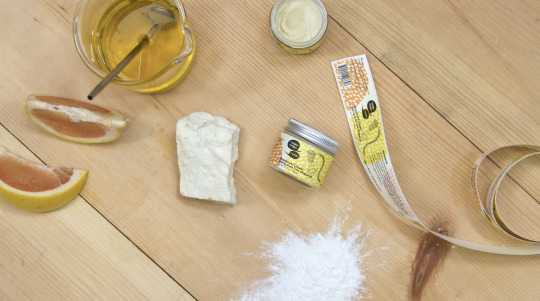
#natural deodorant#meow meow tweet deodorant#baking soda free#magnesium#armpit detox#underarm irritation
3 notes
·
View notes
Text
Conscious Beauty with Justine Sweetman - Facial Oil
Justine Sweetman is a makeup artist based in New York, specializing in non-toxic and vegan beauty. She will be guest blogging with MMT to share some tips from behind the camera.
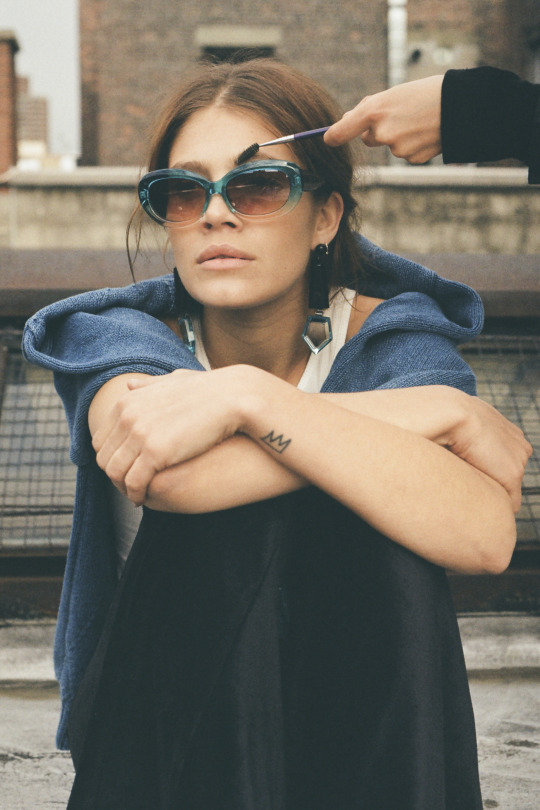
After exfoliating and toning, I applied a generous amount of Meow Meow Tweet Face Oil to model Kimbra’s skin to ensure a healthy and hydrated look. I massaged her face thoroughly then let the oil absorb for several minutes. Any excess was wiped off with cotton cloth before applying foundation.
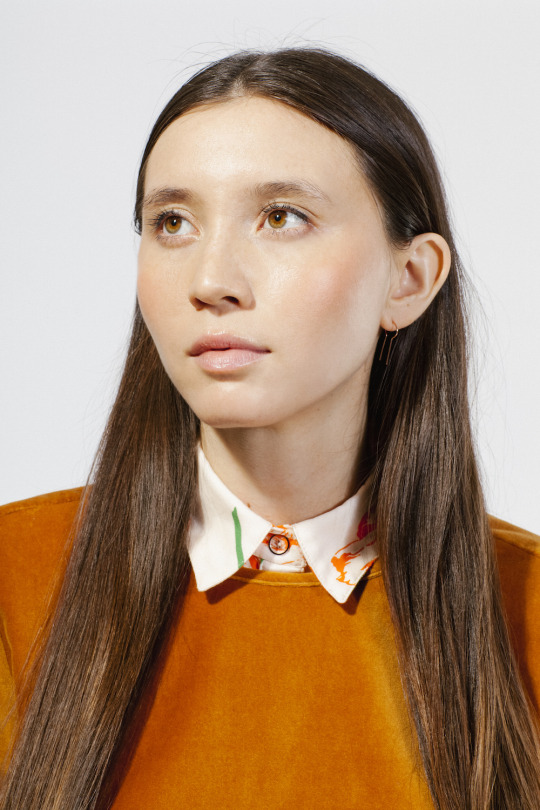
Photo credit: Morgan Levy
0 notes
Text
Shea Butter and its Quirks.
I often take shea butter for granted. I've been using it for so long that I forget just how awesome it is. Shea butter is a natural fat taken from the shea nut; it nourishes the skin with Vitamins A, E and F. Vitamins A and E help maintain the skin and keep it clear and healthy. They are particularly helpful for sun damaged skin- and help prevent premature wrinkles and facial lines. Vitamin F acts as a skin protector and rejuvenator. It soothes rough, dry or chapped skin and helps soften dry or damaged hair. Also, shea butter easily penetrates the skin allowing the skin to breathe and it's noncomedogenic (won't clog pores). We use an incredibly beautiful, nutty-smelling, fair trade, certified organic West African shea butter in many of our products.

As much as I love shea butter, it is THE PITS in the summertime! Ever received a balm from us and it's separated or grainy? The shea butter and product have not “gone bad”. Shea butter becomes grainy after it's heated and cools down too slowly. All of the fats that are molecular-ly similar are attracted to one another and form little fat “crystals”. The crystals will melt when they contact your skin but it does make for a oddly textured balm or cream.
We've got a simple, fast fix!
1. Place your grainy product, tightly capped into a shallow bowl.
2. Pour boiling water so that the water sits just under where the cap meets the jar bottom- you don't want water getting into the product. And be careful not to burn yourself!
3. Leave the product in the balm until the water cools, or 15 minutes.
4. Pull the product from the water bath, dry it and put it in the freezer for 15 minutes.
Voila! All better. This fix can be done with any of our balms and creams.
1 note
·
View note
Text
Cool Cat: Sarah Hallacher
As a special segment of our blog, we’re featuring people from our community that have galvanized us on our path as a small business, as activists, as artists, and as engaged humans. These inspiring folks are doing super cool things. The feature is called “Cool Cat”, because each and every one of them has made us excited and want to be better at what we’re doing.
Cats, Patterns, Speech Bubbles and Bright Colors. That's a simplified description of the MMT packaging. Our co-founder, Jeff, is responsible for the quirky animal drawings on all of our labels. Often the drawings are lifted directly from miscellaneous papers that he's doodled on. They're unfussy and irreverent- they're little jokes and stories that we tell in the studio- we don't belabor them, so they have a lighthearted, whimsical spirit.
A few years ago, we started working with Sarah Hallacher on our branding and packaging design. We first approached her to create our logo. We were skeptical about working with someone else, and I told her that. Jeff and I are art school grads, we had been collaborating with one another for a while, and we prided ourselves on designing the packaging ourselves. However, we knew that we needed someone else in the mix to help bring our packaging and our brand to another level.

Sarah looked at a bunch of Jeff's drawings and came up with the speech bubble logo design. The font inside is actually a cleaned up version of Jeff's drawn letters. We were blown away- not only was the logo PERFECT, but it was as if Sarah had taken what we would do and had just done it... better.
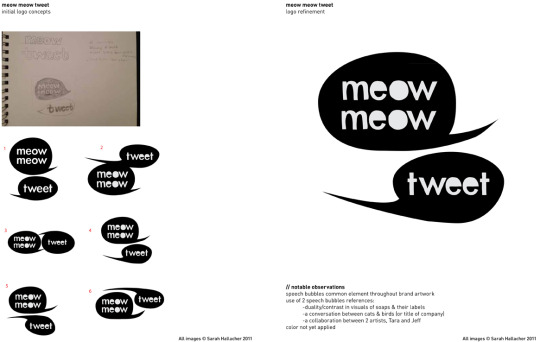
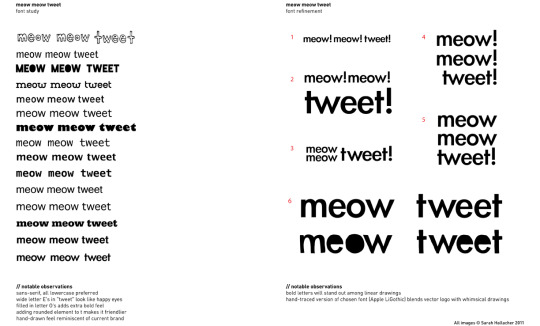
Shortly after, we decided to change our packaging from hand printed paper labels to those colorful ones you see today. As a collector of vintage fabrics and lover of wall paper, I imagined a patterned theme for each collection in our line. Sarah was on board and we developed the patterns and the branding together. Our process is pretty basic, we chat about different ideas, one of us sends the other a rough drawing, the other polishes it up a bit and adds a few more ideas. We go back and forth like that until it's right. I think this is atypical for a client/designer relationship- but it’s what works for MMT.

Aside from being my design soul mate, Sarah is an interactive designer. Don't know what that is? Read our gchat interview below to find out:
SH: Hi
TP: Hello. Okay, ready?
SH: Yep!
TP: Soundtrack for the morning:
SH: I've been feeling Grimes lately, so I started a spotify playlist. There's Hooverphonic, Phantogram, tuneyards, etc.
TP: I've only listened to Phantogram in that list
SH: You'd love tuneyards. It's great sweaty summer dance music.
TP: Ha. Playlist for evening?
SH: Talking Heads. And honestly, a lot of Kanye. I know that's not unwind music.
TP: Which Kanye?Talking heads isn't unwind music either!
SH: I've been revisiting My Beautiful Dark Twisted Fantasy. That album is kind of a masterpiece. Up All Night by Talking Heads is one of my favorites. I guess I've got a theme going here.
TP: Favorite healthy snack and favorite unhealthy snack? Can't think of a healthy snack? :)
SH: Celery hearts. I could eat celery hearts for years and never get sick of them. Just plain too. No hummus.
TP: Mmmm, celery is such an under appreciated veg. So fragrant!
SH: I don't really snack. When I want something bad it'll be a whole meal. Like a huge burger from Shake Shack. AND cheese fries. And maybe a milkshake.
TP: I love milkshakes and fries.
SH: Should we not tell your customers that I'm a carnivore?
TP: We'll convert you eventually. You're so ahead with technology, that when they come out with that lab meat you'll probably be the first one with it in your freezer. Artisan chem burgers.
SH: It's true. I mean have you seen soilent green? The future is now.
TP: Ok... Woods or Ocean?
SH: No. Pass. Don't make me choose. If I had to define the best day of my life, it was a day spent hiking in Muir Woods and an evening running around nude on the beach. I want to live in the limbo between the two.
TP: Yes, my thoughts exactly. A year ago I would have said Ocean, but since we discovered the Catskills- I'm all about the upstate woods. Cats or Birds?
SH: Birds. They seem to have some kind of agenda– some secret world we can't be a part of.
TP: There's a team of crows in this field that we pass on our way to the studio. Like 60 crows. I have no idea why they're there but they are all chilling in the trees chatting. I know what you mean- it's like a convention or something.
SH: It's a murder!
TP: :) Scented or Unscented?
SH: Scented, but it has to be subtle. I'm definitely a lavender lady.
TP: Oh wow! I didn't know that! Sweet or Savory?
SH: Savory. I never hesitate on this one.
TP: Ok, now let's get serious. What do you do?
SH: Right now I'm teaching web design & front-end development through General Assembly. It's an online class, so my students are all over the world. The job is kind of fascinating. It's all held via webcam.
Last week I was meeting with one of my students, and her boyfriend brought her a puppy during our call. I witnessed the whole thing. I wish I had a screenshot of that moment.
TP: Can you talk about what you went to school for? I feel like it's related to the fascination that you're talking about.
SH: It totally is. I went to grad school at NYU's Interactive Telecommunications Program. ITP is known as the center for the recently possible. They foster a lot of experimentation with new technology– even misusing or breaking it– in the name of art, or in the name of discovering what it means to be a human surrounded by so much tech. While I was there became really interested in the latter: what it means to exist online and also in real life. Where does one end and the other begin? I'm fascinated with that place of intersection.
TP: I'm so in love with the work that you do that addresses this stuff. It's truly getting at the heart of that intersection. Night Tweets!
SH: Night Tweets was such a wild project. I lost so much sleep while making it! I probably should've hired a test subject.
TP: Cause the tweet notifications were waking you? Or you were staying up working so much?
SH: Ha, both. I kept waking up to see if my code was running properly, or if the sleep tracker device had disconnected. When I did sleep, I dreamed about tweeting. It was very meta.
TP: Wow. It makes sense that even as the developer you would have interactions with the work that brought it to another place. Even if that was tertiary. What started you doing what you do?
SH: I took a design course after college and learned that you can design with code. It blew me away, so I started teaching myself HTML and CSS. Learning to code opened up a whole new world for me.
TP: What keeps you doing what you do?
SH: Being able to connect with other people. I've been so fortunate to work with and around so many talented artists, designers, developers, musicians, and teachers. Another project I created during an artist residency is User Experience of a Heartbreak. I was trying to capture the nuances in user interface design, specifically during the moments where algorithms don't consider our feelings. I got messages from people all over the world with these crazy stories and how much they related to my project. It was so wonderful to make those connections.
TP: I hear so many people from our generation (the one that grew up without social media) lament our lessening personal and physical interactions. You’re not doing much graphic design anymore right?
SH: You're my only print design client! All of my other work has moved to the digital realm. Web design, interaction design, digital art projects, and anything in between.
TP: Why do you continue working with us?
SH: Knowing the amount of care that goes into making MMT products– I can't imagine a better company and process to be a part of. Our relationship of client/designer has evolved into a collaborative partnership, which is so much more rewarding than most gigs.
For more of Sarah’s work, check out her website.
0 notes
Text
Sun-screening, Vegan Style
It’s that time of year again. Correction, it’s been that time of year again. When the sun is blazing and you can’t leave the house without your sunhat and a healthy layer of sunblocking cream slathered over your skin. Or for those of us that wear block all year round… we’re just upping our numbers. I go from a 15 to a 30 personally.
As is typical, I just made my summer batch of sunblock. Eeee! I know! The summer sun has been doing it’s thing now for weeks and I’ve got a mild tan to prove it. For those of you that haven’t used a mineral sunblock, you may be surprised by the sheen of white that appears on your skin. This is literally the zinc oxide or titanium dioxide creating a physical barrier, scattering and reflecting UVA/UVB rays. THIS IS GOOD.
For those of you who would like to try your hand at making a batch, here’s a pretty good recipe. If you want to make it vegan, sub in .6 oz of candelilla wax for the beeswax. You can find most of the oils, butters and wax at Mountain Rose Herbs, and the zinc oxide at Essential Depot.
Not all of us have the time or the wherewithal to make our own, for those I’ve chosen these two vegan sunscreens. I like these because they have understandable ingredients and they’re not padded out with a bunch of extra (sometimes harmful to skin) stuff, they apply well and they WORK! I only posted ones that I’ve personally used…
Babo Botanicals SPF 30
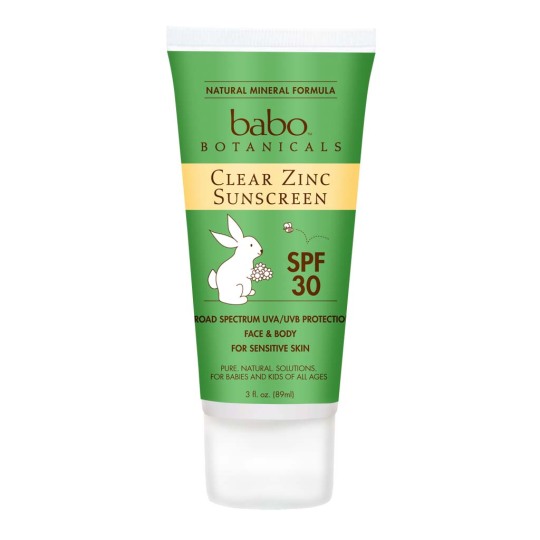
My favorite of the bunch is from Babo Botanicals. Goes on smooth without too much of a white overcast and doesn’t feel heavy or greasy. The ingredient list is great too!
Suntegrity Mineral Sunscreen for Body, SPF 30
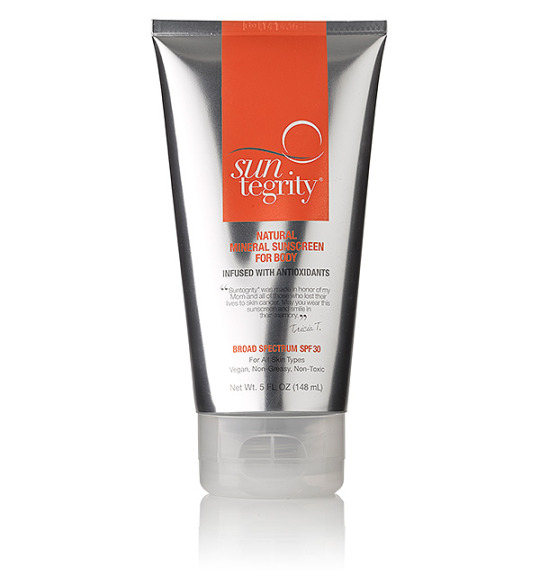
Again, a stellar list of ingredients and good application.
More info about why to use natural sunscreen here and a cool read about plant oils and their natural SPF’s.
33 notes
·
View notes